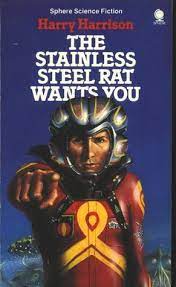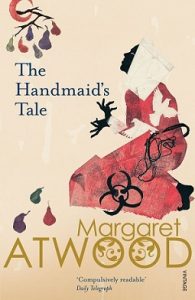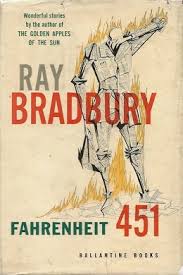
© Penguin
As 2022 dawned, I noticed people on social media drawing attention to the fact that this new year is the year in which the famous 1973 sci-fi movie Soylent Green is set. Starring Charlton Heston, Soylent Green depicts 2022 as a hellish time when overpopulation has exhausted the world’s resources and left many people dependent on a cheap, mass-produced foodstuff called Soylent Green, which is supposed to be made from plankton. But, as Heston’s policeman hero finds out at the film’s finale, Soylent Green is actually made from – surprise! – people. Yes, with human civilisation on its knees, capitalism has incorporated cannibalism.
With Soylent Green topical again, I thought I’d write a few words about the book on which the movie is based, Harry Harrison’s Make Room! Make Room! (1966). It’s less showy but more credible than the movie, a classic of dystopian cinema though it is. And dare I say it, I think the book is better.
The edition of Make Room! Make Room! I read was one published by Penguin Modern Classics in 2009. This feels ironic considering that for most of his career Harry Harrison (who died in 2012) was regarded as a solid, meat-and-two-veg-type science fiction writer. Not the sort of person you’d expect to find favour among mainstream literary critics or have work published by a company synonymous with highbrow literature like Penguin.
Harrison’s first creative job was actually as an artist, not as a writer. Following stints in the Air Corps and military police during World War II, which left him disdainful of military culture – in the introduction to one book he wrote that the armed forces’ “mixture of sadism, unquestioned authority, brutality, racism, intolerance, vulgarity, to name but a few, was the antithesis of everything that I believed in” – he spent much of the late 1940s and 1950s drawing and editing comic-books. It wasn’t until a bout of illness left him, temporarily, unable to draw that he tried his hand at writing. In the decades that followed, he established himself as one of science fiction’s most popular authors, thanks largely to swashbuckling and tongue-in-cheek space operas like the Stainless Steel Rat books. I read some of these in my youth and have always thought their comedic and satirical elements helped pave the way for Douglas Adams and his Hitchhiker’s Guide to the Galaxy franchise.

© Sphere
However, space operas and humour were two things unlikely to curry favour with literary critics, which meant that Harrison, though popular, was underrated as a writer. This was a pity. For one thing, for a long time, science fiction was a genre whose practitioners included many right-wing dingbats – see Robert Heinlein (whose gung-ho 1959 novel Starship Troopers Harrison took the piss out of with 1965’s Bill the Galactic Hero), Poul Anderson, Jerry Pournelle and Orson Scott Card. Actually, there’s plenty of them still on the go, such as arsehole extraordinaire Theodore Beale. Among that lot, Harrison’s authorial voice seemed refreshingly liberal and anti-militaristic and it would’ve been good to see him get more attention.
Anyway, I trust Harrison enjoyed a wry chuckle about Penguin’s decision to label Make Room! Make Room! a ‘modern classic’ three years before his death.
Like the film, Make Room! Make Room! is set in New York, but not in 2022. The book’s set in 1999, 33 years into the future from when Harrison wrote it. It describes a New York that’s bursting at its concrete seams with 35 million inhabitants. Gasoline is all but gone and supplies of food and water are running dangerously low. While Harrison is warning us of the danger of letting the human population grow unchecked, with the resultant depletion of resources, it’s interesting that the story in the opening chapters unfolds against the backdrop of a sweltering heatwave: “After the damp hallway the heat of Twenty-fifth Street hit him in a musty wave, a stifling miasma compounded of decay, dirt and unwashed humanity… Days of heat had softened the tar so that it gave underfoot, then clutched at the soles of his shoes.” This gives the modern-day reader an uncomfortable feeling that what’s really blighting the city is the relentlessly-climbing temperatures of manmade climate change.
The novel’s hero is a tough but dutiful cop called Andy Rusch who’s investigating the murder of a gangster called Michael O’Brien. Cruelly, O’Brien has been living it up in a swanky gated-community apartment with near-unobtainable luxuries such as liquor and red meat, while Rusch is stuck in a partitioned room cohabited by an old man called Sol. (Sol spends much of his time pedalling on a wheel-less bicycle that’s wired to an electrical generator, which keeps his ancient TV and fridge running). Although the city authorities believe that O’Brien was rubbed out by a rival syndicate keen to muscle their way into the city, the murderer is really a hapless young petty criminal called Billy Chung who accidentally killed O’Brien during a bungled robbery.
The book has a double narrative, focusing both on Rusch pursuing the killer and on Chung fleeing and trying to evade capture. But the plot has a darker momentum too – downwards. We see Rusch’s life gradually disintegrate as the polluted, over-populated, under-resourced city around him goes from bad to worse and, despite his best efforts, he fails to hold onto the two people who matter most to him: the feisty but vulnerable Sol and the gorgeous and good-hearted Shirl, moll of the late Michael O’Brien, whom Rusch falls in love with during the course of his investigations.
It’s a smart move by Harrison to wrap the apocalyptic content of Make Room! Make Room! in the trimmings of a crime / detective story. Rather than thrust the horrors of this hellhole New York into our faces, he lets us concentrate, mainly, on the story of Rusch tracking down Chung; while slipping in disturbing details about what’s going on in the background. There are casual mentions of ‘tugtrucks’ – which we realise are wagons pulled along by teams of sweating, straining human beings, there being no more fuel left for conventional, engine-powered trucks. Shirl pays a visit to a heavily fortified, heavily guarded hideout that’s not selling drugs, as we initially expect, but selling beefsteaks. And there are references to Rusch stepping over sleeping or huddling bodies in hallways and stairwells, indicating that hell isn’t quite Jean-Paul Satre’s definition of it as ‘other people’. No, hell is lots of other people.

© Metro-Goldwyn-Mayer
Returning to Soylent Green, the movie adaptation of Make Room! Make Room!, I should say I remember reading about the film in a book called Future Tense: the Cinema of Science Fiction (1979) written by the movie critic John Brosnan. As part of his coverage of the film, Brosnan interviewed Harrison and the author had mixed feelings about how his story had been transferred from the page to the screen.
He certainly admired the job that the director Richard Fleischer (another underrated talent) had made of Soylent Green, but he begrudged some of the changes wrought by the filmmakers. For instance, Sol – who in Soylent Green is played by Edward G. Robinson – dies in the book from injuries he sustains after he takes part in a demonstration, in support of family planning, that turns into a riot. In the movie, Sol decides he’s had enough of the increasingly-shitty world and goes to a ‘euthanasia clinic’ to end it all. Harrison wasn’t impressed by this because, unbeknownst to the filmmakers, euthanasia clinics and suicide machines are something of a cliché in science fiction. (At the time that I read Make Room! Make Room!, I also read Robert W. Chambers’ The King in Yellow, first published in 1895, and it had something in it called a ‘government lethal chamber’.) However, he conceded that the depiction of Sol’s death in the film was powerful. While the old man expires, calming images of fields, forests, flowers, wildlife, unpolluted oceans and other things that he probably hasn’t seen since his youth are projected around him.
And Harrison didn’t like Soylent Green’s ending, which ironically has become its best-remembered moment – wherein Charlton Heston makes the discovery that everyone’s favourite snack in 2022 is secretly made out of recycled human corpses and, wounded, he’s carried away yelling, “Soylent Green is people!” Harrison had researched Make Room! Make Room! meticulously to make its apocalypse seem as realistic as possible, so he knew that the idea of humanity relying on industrialised cannibalism to survive wasn’t feasible. Human beings don’t fatten up very quickly and they require a lot of feeding and looking after, so as a form of livestock to meet the world’s dietary needs, they’re economically a bad idea. And as this study has shown, they’re not even that rich in calories.
By way of contrast, Make Room! Make Room! ends with Rusch on duty in Times Square on the eve of the Millennium – and while the beleaguered city enters the 21st century, he’s given a bitter reminder that no matter how bad things get for the great mass of humanity, there’ll always be a wealthy minority who carry on living in luxury.
I assume Harrison set Make Room! Make Room! in 1999 because he couldn’t resist having its final scene occur at the dawn of the new Millennium, a moment loaded with significance. However, that doesn’t make the book any less terrifying in 2022. After all, the human population is quite likely to hit the eight-billion mark before the end of this year. As well as putting intolerable strains on the world’s supplies of soil, water, vegetation and animal life, this burgeoning number of people means greater production of greenhouse gases and worsening manmade climate change. And it means more human encroachment on the natural world, with the danger that lethal viruses may mutate and switch from living in animal hosts to living in human ones. The past two years have seen us struggling to deal with just one instance of that happening.
Today more than ever, Make Room! Make Room! is an example of ‘science fiction’ threatening to become ‘science fact’ – in the worst possible way.






